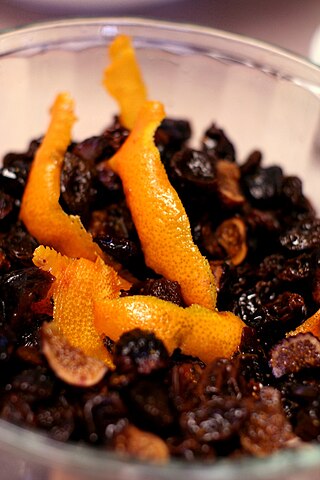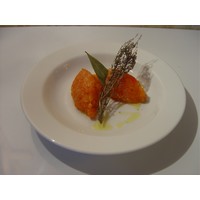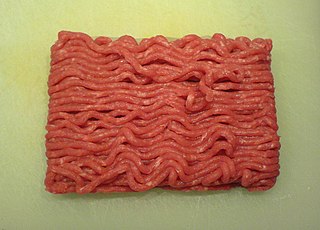
Cooking, also known as cookery or professionally as the culinary arts, is the art, science and craft of using heat to make food more palatable, digestible, nutritious, or safe. Cooking techniques and ingredients vary widely, from grilling food over an open fire to using electric stoves, to baking in various types of ovens, reflecting local conditions.

Food preservation includes processes that make food more resistant to microorganism growth and slow the oxidation of fats. This slows down the decomposition and rancidification process. Food preservation may also include processes that inhibit visual deterioration, such as the enzymatic browning reaction in apples after they are cut during food preparation. By preserving food, food waste can be reduced, which is an important way to decrease production costs and increase the efficiency of food systems, improve food security and nutrition and contribute towards environmental sustainability. For instance, it can reduce the environmental impact of food production.

Cooking bananas are banana cultivars in the genus Musa whose fruits are generally used in cooking. They may be eaten ripe or unripe and are generally starchy. Many cooking bananas are referred to as plantains or green bananas. In botanical usage, the term "plantain" is used only for true plantains, while other starchy cultivars used for cooking are called "cooking bananas". True plantains are cooking cultivars belonging to the AAB group, while cooking bananas are any cooking cultivar belonging to the AAB, AAA, ABB, or BBB groups. The currently accepted scientific name for all such cultivars in these groups is Musa × paradisiaca. Fe'i bananas from the Pacific Islands are often eaten roasted or boiled, and are thus informally referred to as "mountain plantains", but they do not belong to any of the species from which all modern banana cultivars are descended.

Poaching is a cooking technique that involves heating food submerged in a liquid, such as water, milk, stock or wine. Poaching is differentiated from the other "moist heat" cooking methods, such as simmering and boiling, in that it uses a relatively lower temperature. This temperature range makes it particularly suitable for delicate food, such as eggs, poultry, fish and fruit, which might easily fall apart or dry out using other cooking methods. Poaching is often considered a healthy cooking method because it does not use fat for cooking or flavoring the food.

In cooking, to coddle food is to heat it in water kept just below the boiling point. In the past, recipes called for coddling fruit, but in recent times the term is usually only applied to coddled eggs. Coddling differs from poaching in that the coddled ingredient is not placed directly in hot water, but instead in a small dish placed in a hot water bath. The process is either done in a regular pan or pot filled with water, either on the stovetop or placed in the oven, or through the use of a special device such as an "egg coddler". The oven technique is similar to the preparation of baked eggs, the difference being that the preparation of baked eggs does not have to employ a water bath.

Blanching is a cooking process in which a food, usually a vegetable or fruit, is scalded in boiling water, removed after a brief timed interval, and finally plunged into iced water or placed under cold running water to halt the cooking process. Blanching foods helps reduce quality loss over time. Blanching is often used as a treatment prior to freezing, dehydrating, or canning vegetables or fruits to deactivate enzymes, modify texture, remove the peel and wilt tissue. The inactivation of enzymes preserves color, flavor, and nutritional value. The process has three stages: preheating, blanching, and cooling. The most common blanching methods for vegetables/fruits are hot water and steam, while cooling is either done using cold water or cool air. Other benefits of blanching include removing pesticide residues and decreasing microbial load. Drawbacks to the blanching process can include leaching of water-soluble and heat-sensitive nutrients and the production of effluent.

Browning is the process of food turning brown due to the chemical reactions that take place within. The process of browning is one of the chemical reactions that take place in food chemistry and represents an interesting research topic regarding health, nutrition, and food technology. Though there are many different ways food chemically changes over time, browning in particular falls into two main categories: enzymatic versus non-enzymatic browning processes.

Parboiling is the partial or semi boiling of food as the first step in cooking. The word is from the Old French 'parboillir' but by mistaken association with 'part' it has acquired its current meaning.

Maceration is the process of preparing foods through the softening or breaking into pieces using a liquid.

The following outline is provided as an overview of and topical guide to the preparation of food:

Mee pok is a Chinese noodle characterized by its flat and yellow appearance, varying in thickness and width. The dish is of Chaoshan origin and is commonly served in the Chaoshan region of China and countries with a significant Chaoshan Chinese immigrant population such as Singapore, Malaysia and Thailand. Mee pok is commonly served tossed in a sauce, though sometimes served in a soup. Meat and vegetables are added on top.

Concassé, from the French concasser, "to crush or grind", is a cooking term meaning to rough chop any ingredient, usually vegetables or fruit. This term is particularly applied to tomatoes, where tomato concassé is a tomato that has been peeled, seeded, and chopped to specified dimensions. Specified dimensions can be rough chop, small dice, medium dice, or large dice. The most popular use for tomato concassé is in an Italian bruschetta, typically small dice concasse mixed with olive oil and fresh basil, and sometimes other ingredients such as onion, olives, or anchovies.

Browning is the process of partially cooking the surface of meat to develop its flavor through various browning reactions and give it a more attractive color.

Fruit preserves are preparations of fruits whose main preserving agent is sugar and sometimes acid, often stored in glass jars and used as a condiment or spread.

West African cuisine encompasses a diverse range of foods that are split between its 16 countries. In West Africa, many families grow and raise their own food, and within each there is a division of labor. Indigenous foods consist of a number of plant species and animals, and are important to those whose lifestyle depends on farming and hunting.

Frozen vegetables are vegetables that have had their temperature reduced and maintained to below their freezing point for the purpose of storage and transportation until they are ready to be eaten. They may be commercially packaged or frozen at home. A wide range of frozen vegetables are sold in supermarkets.

Kinilaw is a raw seafood dish and preparation method native to the Philippines. It is also referred to as Philippine ceviche due to its similarity to the Latin American dish ceviche. It is more accurately a cooking process that relies on vinegar and acidic fruit juices to denature the ingredients, rather than a dish, as it can also be used to prepare meat and vegetables. Kinilaw dishes are usually eaten as appetizers before a meal, or as finger food with alcoholic drinks. Kinilaw is also sometimes called kilawin. In the northern Philippines, grilled meat dish is also known as kilawin.

Lalab or lalap/lalapan (Indonesian) is a Sundanese raw vegetable salad served with sambal terasi. It is a popular Sundanese vegetable dish originated from West Java & Banten, Indonesia.

















